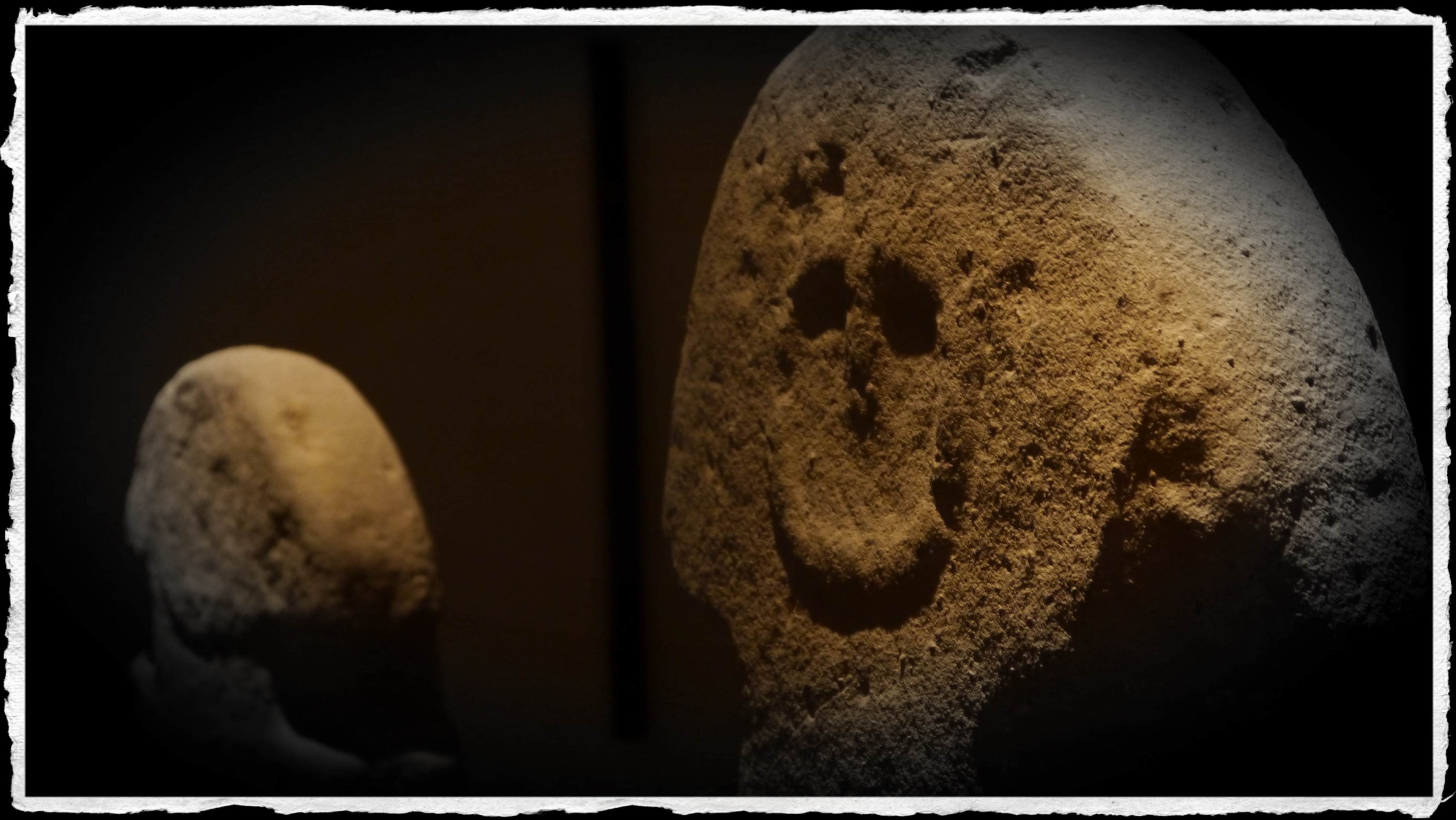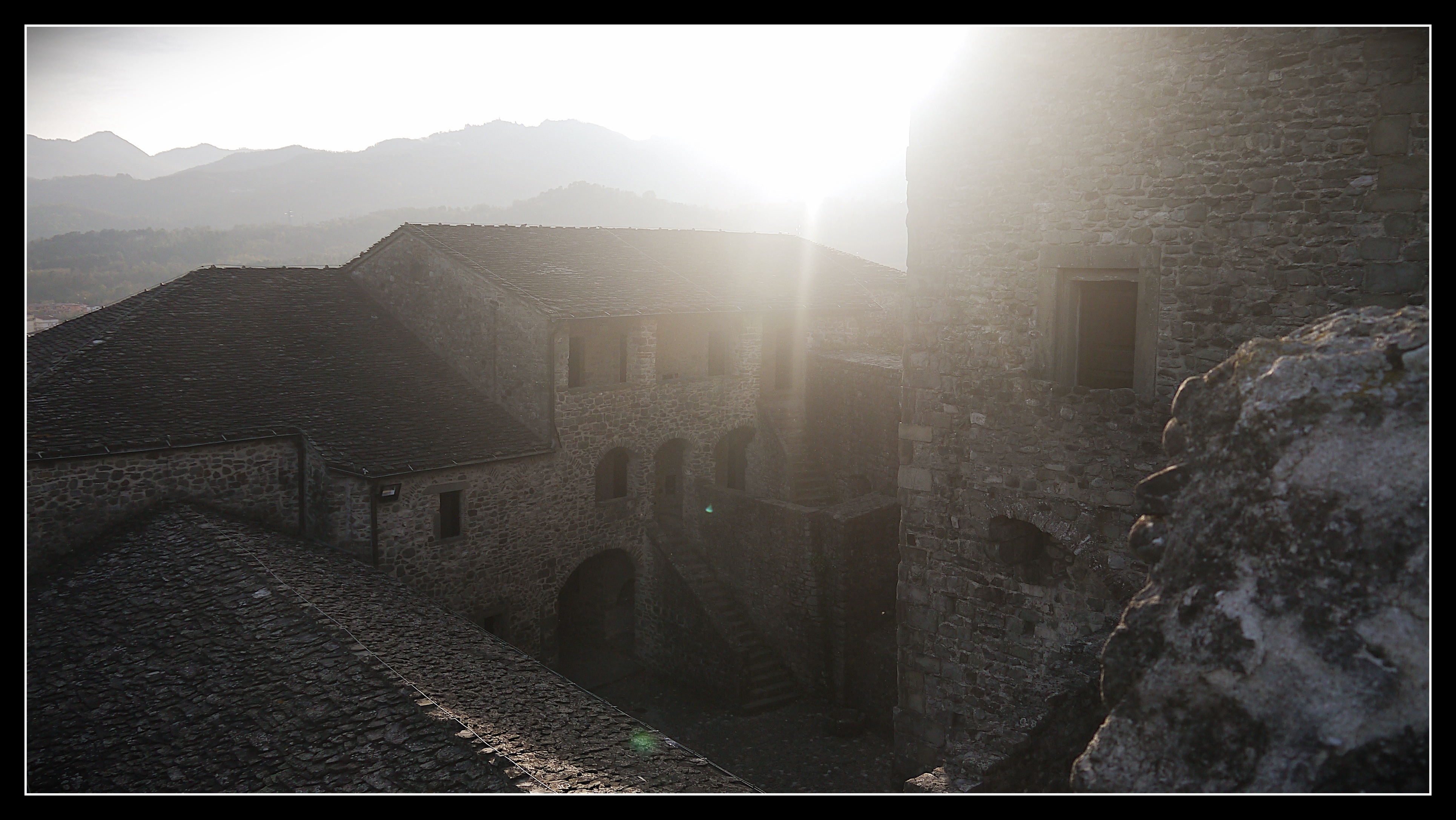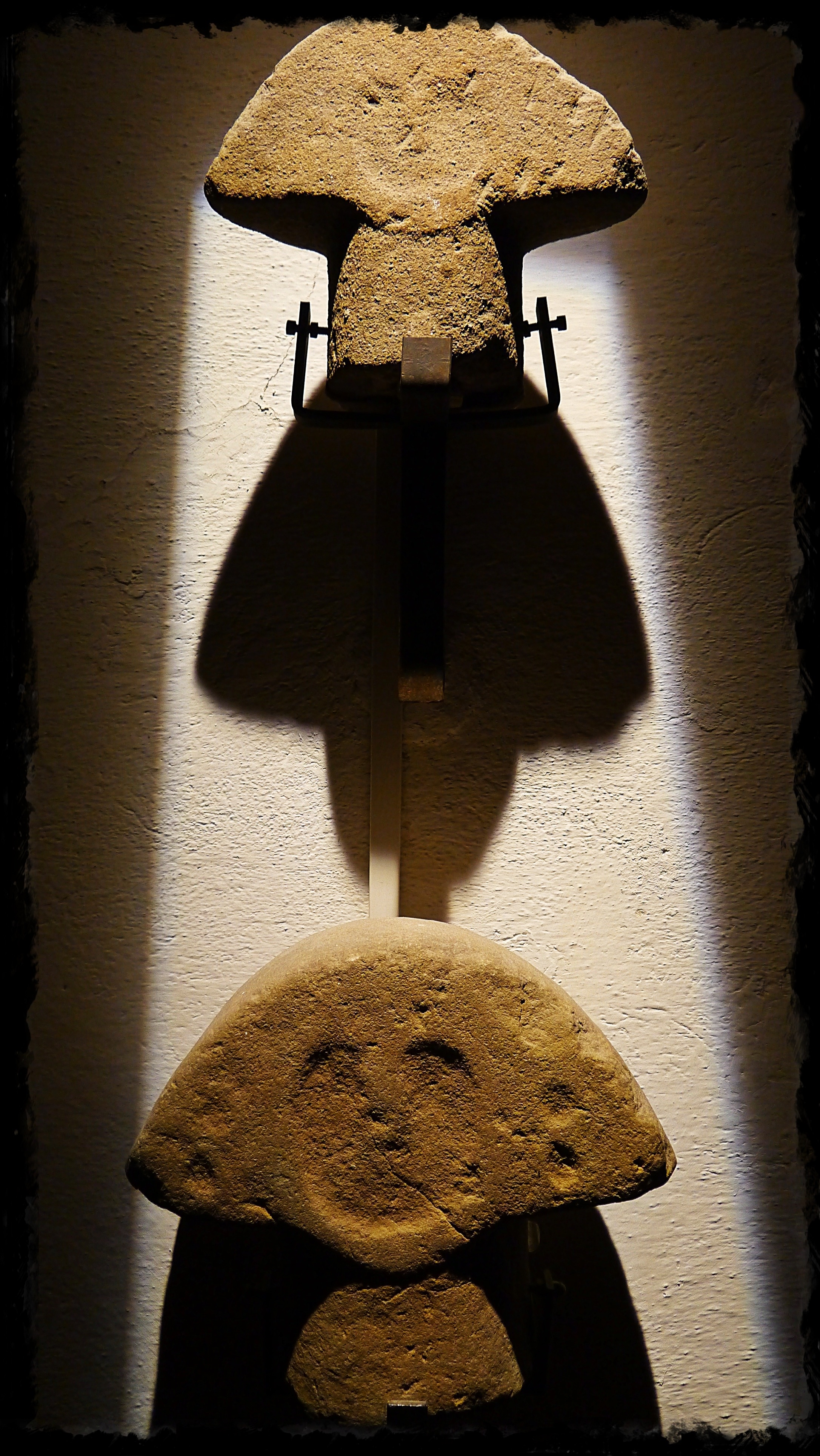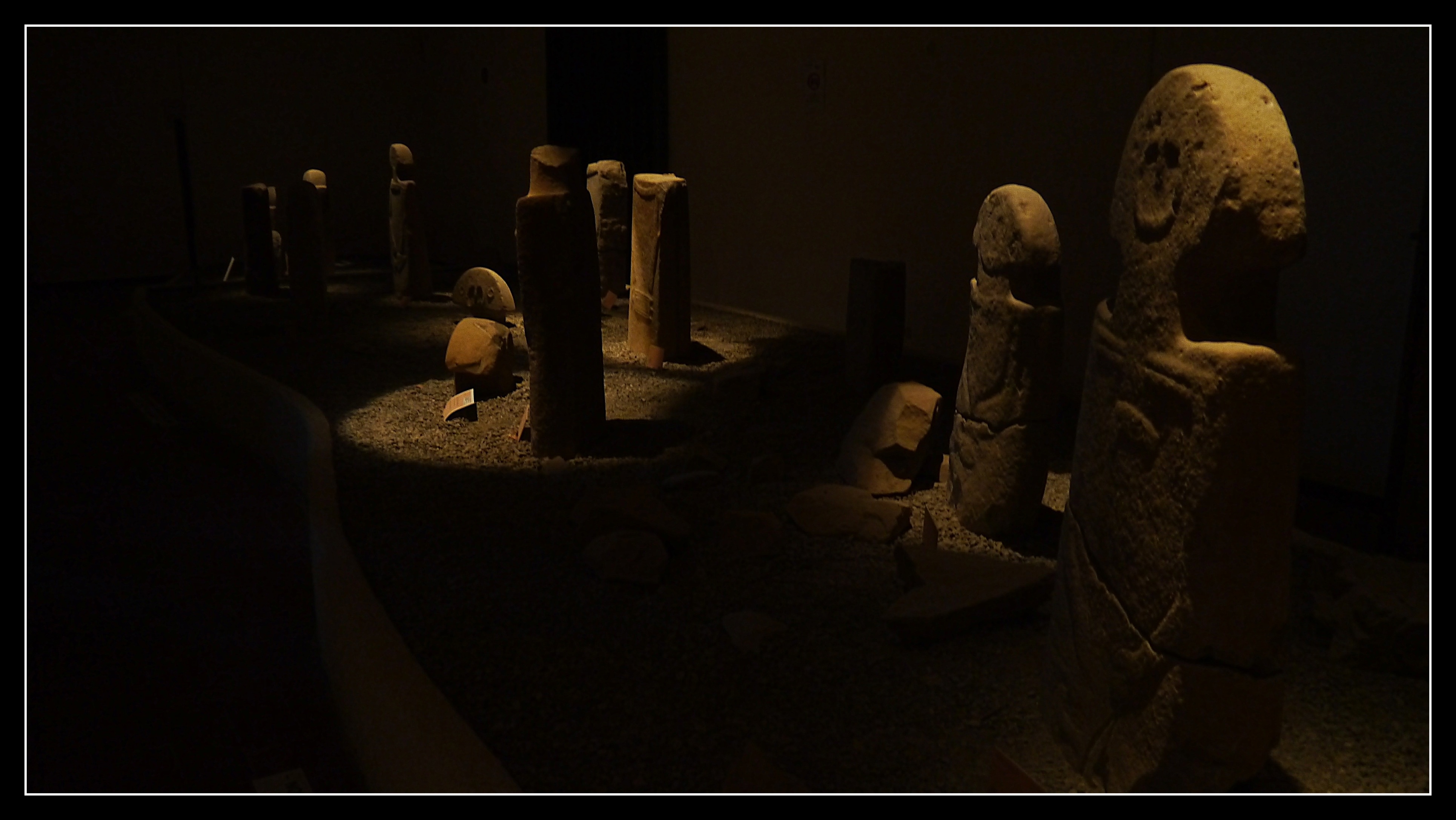Men of Stone – The ‘Menhir’ or Statue Stele of Lunigiana, Tuscany, Italy
A dormitory on wheels. That is how I often describe my groups. Hold on, I love them (almost all of them) really, but on the long bus journeys it is often thank goodness – or perhaps not goodness, but thanks instead to pure espresso in the veins that the driver and, less crucially so, myself, who are awake. I once calculated that a driver friend of mine had made the equivalent of 4 and a half return trips to the moon during his career, driving his bus. As for me, it is more than once I have made the three to four hour journey from Florence to Rome, let’s say.
When the somewhat predictable conversation about hotels, groups, money, traffic and weather runs out – as it does increasingly rapidly after twelve seasons in my case, there remains little else to do but look straight ahead. The view from the ‘suicide seat’ as I call the position reserved for us guides is second to none of that there is no doubt. So on such occasions there are two things I look at; car registration plates (my girlfriend, as I seem not to be able to switch this off and often point them out even when not on duty- calls me the Rain Man of number plates and I really feel for her) and road signs.
Travelling thousands of miles on European motorways each year my favourite have come to be the brown tourist signs that appear a few miles prior to their corresponding exit. Know the ones I mean? Especially in France, they seem to go in for them in a big way, but Italy has them too. In the UK we are a little behind. Hmmm… They give a name, show a drawing of the place and in effect advertise exiting at the next opportunity. Battle fields, lakes, museums, historic towns, even nuclear reactors and one for acorns, they lure us drivers to divert from the Tom-Tom and do some real travelling.
This summer, being a virtual commuter between the rather cut-off and certainly little known, Lunigiana part of Tuscany, Italy and Livorno, I have passed ten or so such signs on each journey. One has a rather scary clown (Viareggio, famous for its carnival) but one an all together more enigmatic, mysterious and enticing face. It shows a smiling mouth (much more mystic than the one in the Louvre) and two eyes staring out from a semi-circular carved stone. Its message is ‘welcome to the Lunigiana’ and much like the place, most who pass the sign and pass the area, have no idea about either.
Drive past as many times I as did and I challenge even the most ‘highlights of Europe in ten days’ tourist to wonder who this chap is (of course by definition they would only pass once, and most likely asleep when doing so). However, this is Europe in November. It is quiet. Most of my readers are now back in the states, the cruise ships have stopped docking and until March or so, we have the place to ourselves. Now is the time to discover real Europe, the villages, restaurants, museums, we don’t have time for in the peak season. Now is the time to discover the Statue Stele Lunigianesi- the mysterious ‘men of stone’.
To do so, travel to Pontremoli deep in the heart of the Lunigiana, in the valley of the Magra river, just off the the A15 motorway which cuts across and through the Apennines on its way from La Spezia to Parma. Park in the old medieval square and climb up – counting funky painted benches as you do – to the beautifully situated Castello del Piagnaro, in which you will find Il Museo delle Statue Stele Lunigianesi. The castle traces its origins back to the 10th Century, is located above the Via Francigena – the ancient pilgrim route – and was for centuries been defined as the ‘key to the door of Tuscany’. Since 1975, it has been the home to these mysterious men of stone.
The visit splits into two – a stroll around the impressive castle with wonderful vantage points of the whole Magra valley and back up to the Apennines in the distance. The one time military significance of the Castello del Piagnaro is immediately obvious. I recommend the extra one euro for the audio-guide – as little or nothing is labelled in English. Then, the museum. Now most museums I visit for work are huge. In fact the more huge the more they like to say just how huge they are. The Louvre, the Vatican, the British Museum. Guides love facts like ‘if you spend just 30 seconds in front of each exhibit, you’ll be here six months’. If you were to do so in this museum, you’ll be out about 10 minutes later.
Disappointing? Well perhaps at first, but then you actually stop and appreciate each and every one of these remarkable stone statues. No one know really knows why they exist, what they represent or even with any great certainty who made them. Some are more than 4700 years old. That’s old, very old. Are they commemorative, funeral statues, used by druids for sacrifice, erected by giants who roamed the earth before a legendary flood? We don’t really know. It is estimated that in Northern Europe alone there were once more than 50.000 of these stone men – and women!
For there are women too. Carved from hard stone – sometimes so hard the workmen gave up and left them incomplete, they were carved to last. Women are represented by small spherical breasts, men have extremely detailed daggers or axes, sometimes sheathed, sometimes not. We know a little of these weapons from corpses found frozen in the high Alps. Most were found during agricultural works in and around the villages and hills surrounding Pontremoli. Whatever their purpose or age, early Christians felt significantly threatened by them to decapitate many of these stelae and we are lucky to have these fee survivors.
The two or three rooms and the accompanying panels are atmospherically lit and you can be virtually sure to not share the place with too many tourists – I was alone the whole time. Staring into the eyes of these remarkable creatures in search of a glimpse of understanding is really quite trippy. If only they could talk, what they must have seen. Just like their modern cousin on his brown motorway sign, who sees thousands of cars pass each day, they must have so many stories to tell. Divert up the A15 to Pontremoli and maybe just maybe the Menhir of the Lunigiana will speak to you.
For details of the museum as well as opening times and costs see Museo Delle Stele Lunigianesi.
My travels now take me away from the Lunigiana. This little corner of Tuscany has truly captured a piece of my heart as I have spent spring, summer and autumn here this year. I will return next year, but in the mean time if you are keen to learn more or explore the are I suggest this great blog Ciao Lunigiana.






Thomas, you are the best tour director ever! Personally, I always enjoyed your talking on the bus! Keep it up!!
Ahh, thanks Cathy. I know YOU were never asleep. Will keep talking then… Hugs
Thanks so much for talking about our wonderful museum. It is small, but really quite amazing. The lighting is very clever. If turned off, you can’t see many of the features of the statues. They have been worn away by time, and it is only by creating shadows that you can really appreciate them. And thank you too for mentioning my humble blog!
You’re welcome, the pleasure was all mine. Just hope you/they will forgive the few photos I sneaked, but they were for a good purpose as you can see.
Nice piece. Look forward to more on our corner of Italy. Hope we can return the favor.
[…] Thomas Randall’s post on his blog 2ndcupoftea.com about the stele statue museum in Pontremoli […]
Best of Ciao Lunigiana on Facebook - November 2012 | Ciao Lunigiana said this on December 12, 2012 at 9:02 am |
How big are the stele?
Thanks for reading Paul. It’s been a while since my visit. From memory – up to just over waist height. I know that is not scientific, but I don’t want to give you false information… If you would like, I can write to the museum and ask for you… take care, stay safe